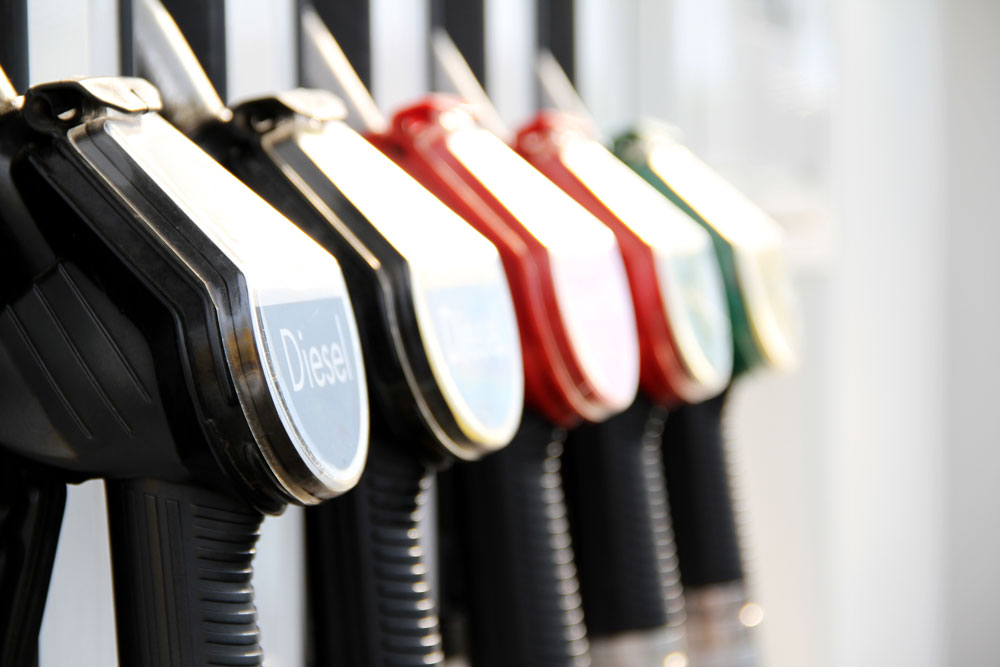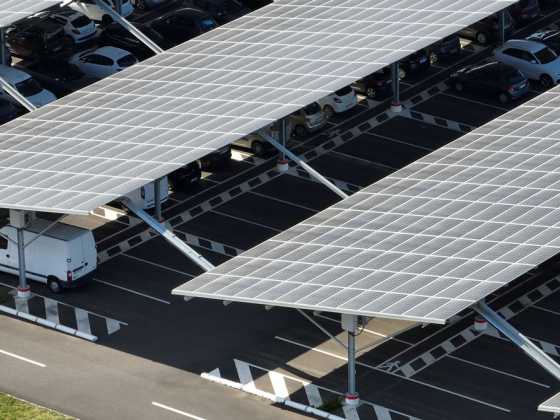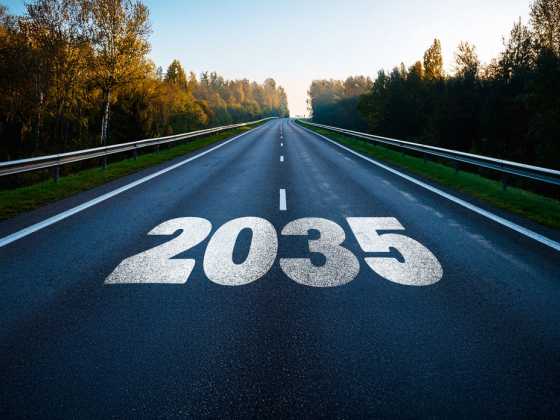Pivotal moments that shaped transport decarbonisation

With many years of experience within the clean vehicle sector, Zemo Partnership’s Andy Eastlake reflects on the key moments that have impacted transport decarbonisation
Congratulations to GreenFleet and the PSI team on reaching 150 editions! It’s a notable milestone and an opportune time to reflect on how far we’ve come on the ‘road to zero’ since GreenFleet’s first edition.
Zemo Partnership – then LowCVP – was formed only a couple of years before that first edition; we celebrated our twentieth anniversary earlier this year at a special event held at City Hall in London.
That event encouraged us to reflect on the progress made in transport decarbonisation through close and deepening partnership with the widest range of stakeholders, many of them amongst GreenFleet’s readers and contributors.
When Zemo was set up and GreenFleet started publishing, so many of the names and acronyms familiar today just didn’t exist. BEVs and ULEVs were not a thing, the Climate Change Act and its creation the Climate Change Committee (CCC) didn’t exist (just an ambition to reduce CO2 60 per cent by 2050!) transport and energy were rarely considered together and OZEV (and even OLEV) were still many years away.
But whilst so much has changed, there are also some constants. In 2003, 52 per cent of the new car market comprised sales to fleet and business users (it’s 55 per cent now) and that crucial market is where GreenFleet focussed its low emission message then, and still does to this day.
Political change
We’ve also seen constant change in the political backdrop over the last two decades; there have been six Prime Ministers and twelve Secretaries of State for Transport.
The life expectancy of ministers responsible for transport decarbonisation has been shorter still – well under two years.
Despite the changes in political leadership and significant challenges – including phases of austerity and political (especially Brexit-related) uncertainty – there has, however, been a pretty consistent cross-party – and, indeed, cross industry – consensus on the need to tackle the causes of climate change and to bring forward policy prescriptions to decarbonise road transport.
The foundations for future policy were laid with the 2002 ‘Powering Future Vehicles Strategy’ which not only created LowCVP but which set out government plans for fuels, infrastructure, vehicle technology and taxation as well as defining targets (most of which we have met along the way).
A pivotal moment
For the ‘big picture’ of course, the 2008 Climate Change Act was a pivotal moment. It committed the UK Government by law to reducing greenhouse gas emissions to 80 per cent of 1990 levels by 2050, and established the Climate Change Committee – a body that Zemo has worked closely with over the years – to monitor and report on progress towards the legal targets.
In 2019, the Climate Change Act was strengthened when the UK became the first major economy to commit to a ‘Net Zero’ target by 2050. At the end of 2022, around 140 countries had announced or were considering similar targets, covering close to 90 per cent of global emissions.
Key moments in domestic transport-related climate policy have come hard and fast in recent years. In 2020, the government took the historic step of announcing the end of sale of new petrol and diesel cars and vans by 2030 (subsequently revised – see below) and all ICE hybrid versions by 2035. In 2021, the Government followed up with the announcement that no new emitting heavy goods vehicles would be sold after 2040 (and smaller trucks by 2035). We’re still awaiting the conclusion of proposals to end the sale of non-zero emission buses and coaches as well as motorcycles and powered light vehicles (for both, the government consultation processes have yet to be concluded).
Set backs on route
Of course, there have been a few wobbles along the way. In 2015, ‘Dieselgate’ ended the growth of diesel passenger cars (seen and promoted as a lower CO2 option by fleets) dropping their sales from over 50 per cent of the market to less than eight per cent of new cars now.
Earlier this year, the government pushed back the 2030 ‘conventional ICE’ phase-out deadline to 2035 (now in line with the UK’s EU counterparts). However, the recently published ZEV Mandate calmed motor industry nerves by (more or less) sticking to the ZEV sales trajectory that had been set out in the initial consultation.
The overall plan is that sales of all new emitting road vehicles will end at least a decade before the 2050 deadline set by the Climate Change Act and stock turnover should mean that there are very few ICE vehicles left to produce emissions from the tailpipe on the UK’s roads by 2050. (We’ll make sure that any that remain are powered by low or zero carbon fuels, of course).
Certainly, for many years the carbon emitted mostly came from the fuel used so, in the early 2000s (supported by LowCVP work), the duty on biofuels was cut by 20ppl to encourage its use until a reversal in 2010 removed that preferential rate (a decision many are keen to see revisited).
The 2021 Transport Decarbonisation Plan set out the current government’s ambitions and commitments for all transport sectors. It included several policy prescriptions that Zemo and partner organisations had proposed or for which collaborative activities convened by the Partnership had laid the foundations, for example highlighting the UK market potential for powered light vehicles (PLVs).
Once again we’re entering a new and uncertain political phase and, judging by the current opinion polls at least, there’s a high likelihood that we’ll have a new government within a year with a keen focus on the economic opportunities presented by the transition to net zero and a more activist approach to industrial policy.
Technology advancements
What a long way we’ve travelled, though, in terms of the technology available since that first edition of GreenFleet! Around that time, the original Toyota Prius hybrid was one of relatively few options for fleet managers who were in the vanguard of the green transition, LPG and CNG were still making inroads in the light vehicle sector, the first fully electric bus was still a decade from entering service and we’d barely even begun thinking about trucks!
As we approach the end of 2023, there are around a million fully electric cars on Britain’s roads, 50 per cent of mopeds sold are electric, and well over seven per cent of our buses are zero tailpipe emissions (with new registrations increasingly dominated by full BEVs). We’re beginning to make good progress on vans and trucks too, with a growing number of options available and technology challenges and uncertainties now limited to the largest and longest-range vehicles.
We’re proud of Zemo’s role in progress along the ‘road to zero’ over the last twenty years, of course. Our 20th anniversary provided an opportunity to focus on some of the achievements, oft celebrated in the pages of GreenFleet.
Fuel economy
Soon after our formation, Zemo (then the Low Carbon Vehicle Partnership) initiated and drove the voluntary introduction of the new car colour-coded fuel economy label (later extended to the second-hand market and into legislative requirements) which helped to focus car buyers’ attention on environmental performance, encouraging them to make the greener choice.
LowCVP later spearheaded efforts to focus on vehicles’ full life-cycle emissions impacts, publishing several influential reports and studies, with more coming soon.
In the early days, the Partnership also played a key role in ensuring that biofuels brought to market are renewable and environmentally beneficial, with ground-breaking work on sustainability standards, underpinning regulations for the UK’s Renewable Transport Fuel Obligaton (RTFO) which has ratcheted up the amount of renewable fuel added to all retail petrol and diesel. LowCVP input was central to the seminal Gallagher Review which covered the indirect effects of biofuels and which was a key influence on later policy.
Today we await how the DfT’s Low Carbon Fuel Strategy will lay out plans to 2050 (again a key document that Zemo has had a significant role in developing).
More recently, Zemo has focused on market support for fleets using renewable fuels, introducing the successful (and now international!) Renewable Fuels Assurance Scheme which provides buyers with independent advice on fuels’ greenhouse gas emission savings and raw material provenance, helping to improve operator confidence and trust in the sustainability performance of fuels like HVO and biomethane.
As many operators (particularly in the commercial sector) will be aware, renewable fuels provide a practical and immediate option in road vehicles for which electrification is not yet an option or financially viable.
Greening the bus sector
We’re particularly proud of Zemo’s work in the bus sector. From around 2003, the Partnership began laying the foundations for the UK’s success in decarbonising buses, setting the standards and playing a central role in the ‘bus innovation life-cycle’. The Partnership was central in establishing the parameters for all the key UK Government grant schemes to incentivise low and zero emission bus uptake and has underpinned these with industry-supported certification and accreditation processes.
UK policy on bus decarbonisation is widely recognised as having been a real success and the UK is now outperforming Europe on zero emission bus uptake.
Zemo has also pioneered work on retrofit accreditation for those fleets unable to afford new vehicles at such a pace. This has enabled operators of existing vehicles to comply with Clean Air Zone (and LEZ and ULEZ) standards. The Clean Vehicle Retrofit Accreditation Scheme (CVAS) has been addressing the air pollution emissions from buses and coaches as well as heavy goods vehicles, mini-buses, taxis and vans.
Heavy goods vehicles
Amongst other more recent highlights, Zemo and our partners have been influential in laying the foundations for progress in decarbonising the truck sector. Having worked on the Low Carbon Truck Trials and Low Emission Freight Trials we’ve recently been supporting the Government’s £200m commitment to the Zero Emission HGV and Infrastructure Trials (ZEHID).
And just as GreenFleet JUICE has embraced the ‘enablers’ for decarbonisation (like chargepoints and infrastructure) the Zemo-convened Electric Vehicle Energy Taskforce (which published its final reports in 2022) brought together leading representatives of the energy and transport sectors (many for the first time) to jointly tackle the challenges and maximise the opportunities from the electrification transition.
Many of the Taskforce’s recommendations were recently enshrined in the UK Public Charge Point Regulations, published in early November this year and which have just come into force.
It’s been quite a roller-coaster for all of us, but since that first edition of GreenFleet was published, just look how much has changed and how much progress we’ve made towards zero emissions transport by working in partnership!






